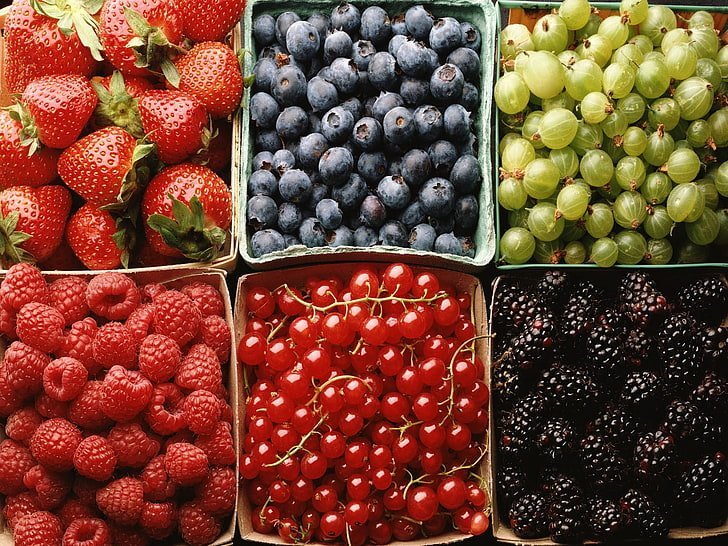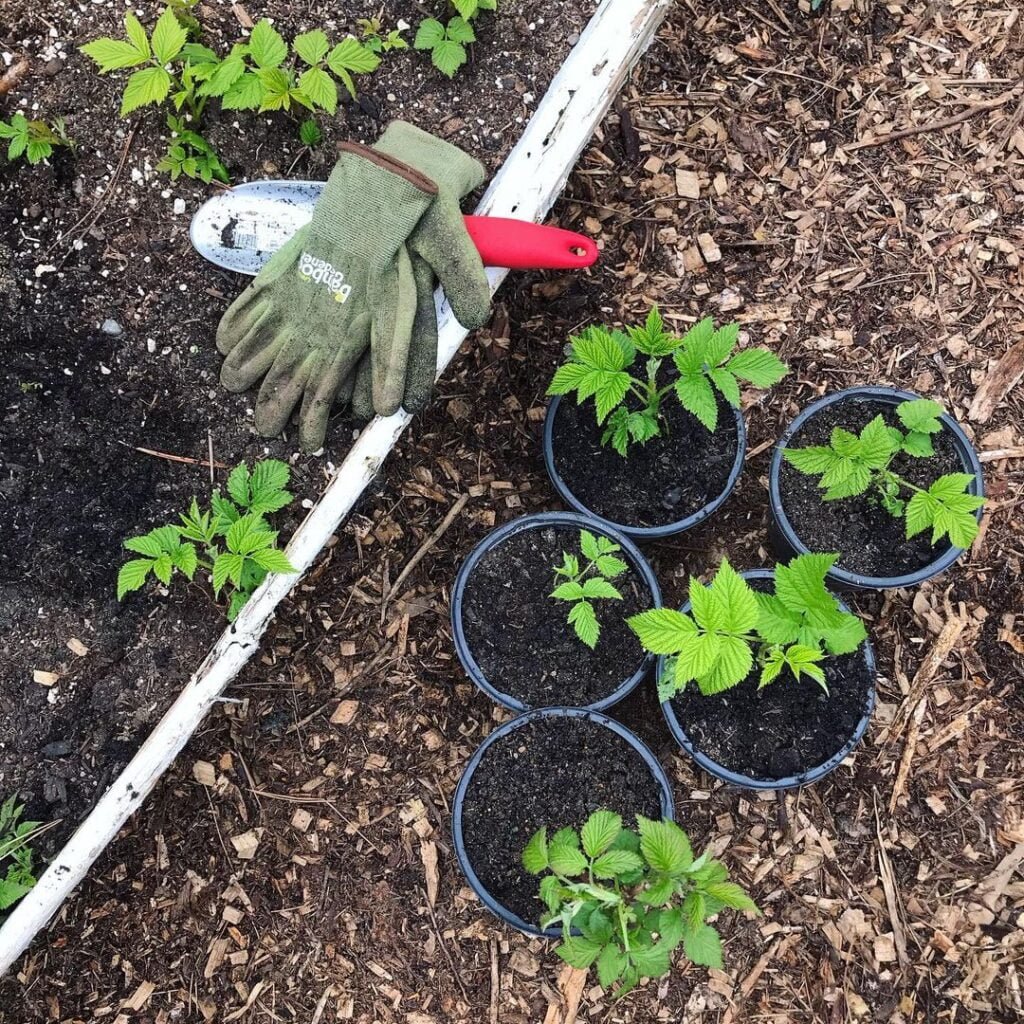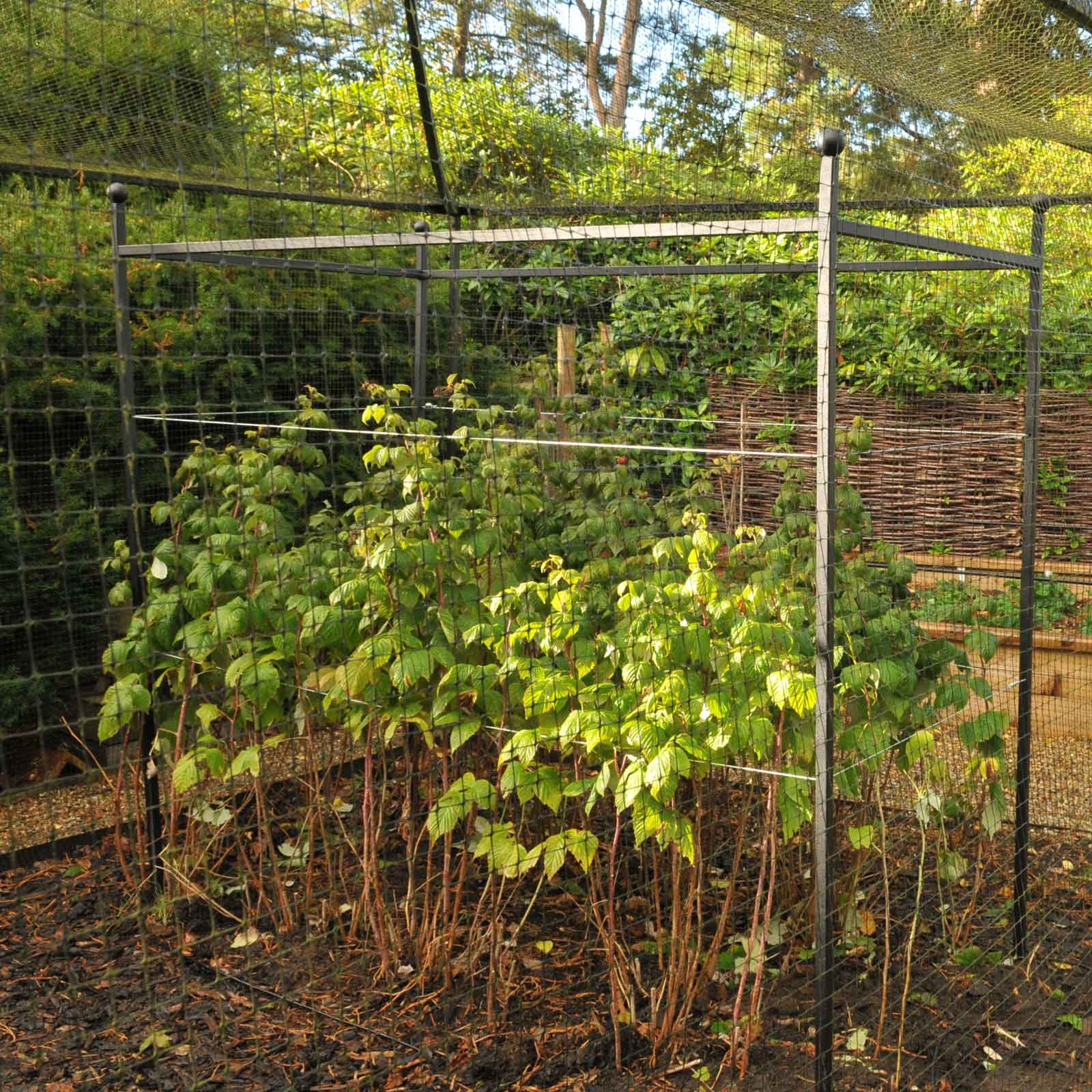Discover the joy of homegrown Raspberries with our comprehensive guide. From site selection to pruning techniques, learn everything you need to know to cultivate delicious, bountiful raspberry harvests in your backyard or garden.
Growing your own Raspberries can be an incredibly rewarding experience. Not only do these delicious berries make a wonderful addition to your diet, but they also add beauty and interest to your garden or backyard. Whether you’re a seasoned gardener or a complete beginner, with the right knowledge and techniques, you can successfully cultivate a thriving raspberry patch right at home.
In this complete beginner’s guide, we’ll cover everything you need to know about growing raspberries, from choosing the right variety to planting, caring for, and harvesting these delightful fruits. So, let’s get started on your journey to homegrown raspberry bliss!
Here’s a detailed information chart for Raspberries:
| Aspect | Details |
|---|---|
| Botanical Name | Rubus idaeus (Red Raspberries), Rubus occidentalis (Black Raspberries) |
| Plant Type | Perennial fruit-bearing shrub |
| Zones | USDA Zones 4-8 |
| Exposure | Full sun |
| Bloom Time | Late spring to early summer |
| Height/Spread | 4-6 feet tall and 2-3 feet wide |
Choosing the Right Raspberry Variety

The first step in growing raspberries is selecting the right variety for your climate and growing conditions. Here are a few factors to consider:
- Growing Zone: Raspberries are typically classified as summer-bearing or ever-bearing (also known as fall-bearing or primocane-fruiting). Summer-bearing varieties produce one crop per year, while ever-bearing varieties produce two crops – one in the summer and another in the fall.
- Color and Flavor: Raspberries come in a variety of colors, including red, yellow, black, and purple. Each color offers a unique flavor profile, from the classic tartness of red raspberries to the rich, wine-like notes of black raspberries.
- Cold Hardiness: If you live in a colder climate, choose varieties rated for your USDA hardiness zone. Some popular cold-hardy options include ‘Boyne,’ ‘Killarney,’ and ‘Nova’ for summer-bearing, and ‘Autumn Bliss’ or ‘Heritage’ for ever-bearing.
- Disease Resistance: Certain raspberry varieties have been bred to be more resistant to common diseases like raspberry mosaic virus or anthracnose. Choosing disease-resistant varieties can save you a lot of headaches down the road.

Once you’ve selected the right variety (or varieties) for your needs, it’s time to prepare your planting site.
Site Selection and Preparation
Raspberries thrive in well-drained, slightly acidic soil (pH between 6.0 and 6.8) and full sun exposure. Here are some tips for choosing and preparing the perfect spot for your raspberry patch:

- Sunlight: Raspberries need at least 6 to 8 hours of direct sunlight per day. Choose a location that receives ample sunlight throughout the growing season.
- Soil Drainage: Poor drainage can lead to root rot and other issues, so ensure your planting site has well-draining soil. If necessary, amend the soil with compost or other organic matter to improve drainage.
- Soil pH: Test your soil’s pH level and make any necessary adjustments. Raspberries prefer slightly acidic soil, so you may need to add sulfur or aluminum sulfate to lower the pH if it’s too high.
- Raised Beds: If you have heavy or poorly drained soil, consider planting your raspberries in raised beds. This can improve drainage and provide better control over soil conditions.
- Wind Protection: Raspberries can be susceptible to wind damage, so choose a site that offers some protection from strong winds, or plan to install a windbreak or fence around your planting area.
Once you’ve chosen and prepared the perfect spot, it’s time to plant your raspberries!

Planting and Spacing
Proper planting and spacing are essential for ensuring your raspberry plants have enough room to grow and produce an abundant harvest. Here are some guidelines to follow:

- Timing: The best time to plant raspberries is in the early spring or late fall, when the plants are dormant. Avoid planting during the heat of summer, as this can stress the plants.
- Spacing: Raspberries should be planted 2 to 3 feet apart within rows, with rows spaced 6 to 8 feet apart. This allows for adequate air circulation and prevents overcrowding as the plants mature.
- Depth: Plant your raspberries at the same depth they were growing in the nursery or pot. Planting too deeply can lead to rot, while planting too shallowly can dry out the roots.
- Planting Method: Dig a hole wide enough to accommodate the root system, and gently spread the roots out in the hole. Backfill with soil, firm it gently, and water thoroughly after planting.
- Support System: Consider installing a trellis or support system for your raspberries, as the canes can become heavy and may need support, especially as they bear fruit.

With your raspberries planted and supported, it’s time to focus on ongoing care and maintenance.
Caring for Your Raspberry Plants
Proper care is essential for ensuring your raspberry plants thrive and produce a bountiful harvest year after year. Here are some key care tips:

- Watering: Raspberries have shallow root systems and require consistent moisture, especially during the fruiting season. Water deeply and regularly, aiming for about 1 to 2 inches of water per week.
- Mulching: Apply a 2- to 4-inch layer of organic mulch around your plants. This helps retain moisture, suppress weeds, and add nutrients to the soil as it decomposes.
- Fertilizing: While raspberries don’t require excessive fertilization, they can benefit from an annual application of a balanced fertilizer in early spring. Follow the product’s instructions for appropriate application rates.
- Pruning: Proper pruning is crucial for maintaining plant health and maximizing fruit production. Summer-bearing varieties should be pruned in late winter or early spring, while ever-bearing varieties require both summer and fall pruning.
- Pest and Disease Management: Keep an eye out for common raspberry pests like cane borers, spur blight, or raspberry fruitworm. Address any issues promptly with organic or chemical controls as needed.

By following these care guidelines, you’ll be well on your way to a thriving raspberry patch that produces delicious, healthy fruit for years to come.
Harvesting and Storing Raspberries
One of the most rewarding aspects of growing raspberries is, of course, the harvest! Here are some tips for picking and storing your homegrown berries:

- Timing: Raspberries are typically ready for harvest from late June through mid-August, depending on your variety and climate. Keep an eye out for plump, deeply colored berries that easily detach from the plant when gently pulled.
- Picking Method: Gently grasp the berry between your thumb and forefinger and pull it off the plant, taking care not to crush or damage the fruit. Pick in the morning or evening when temperatures are cooler, and use a shallow container to avoid crushing the berries.
- Refrigerating: Raspberries are highly perishable and should be refrigerated as soon as possible after picking. They will keep for 2 to 3 days in the refrigerator.
- Freezing: If you have a surplus of berries, freezing is an excellent option for extending their shelf life. Gently rinse the berries and pat them dry, then spread them out on a baking sheet and freeze until solid. Once frozen, transfer the berries to an airtight container or freezer bag and store in the freezer for up to a year.
- Using Fresh Raspberries: Fresh raspberries make a delicious addition to smoothies, salads, yogurt, cereal, and desserts. They’re also fantastic for baking into pies, cobblers, and jams. Experiment with different recipes to enjoy your homegrown harvest in a variety of ways.

Troubleshooting Common Issues
While raspberries are generally hardy and low-maintenance, you may encounter some common issues during the growing process. Here’s how to troubleshoot and address them:

- Poor Fruit Set: If your raspberry plants are producing few or no berries, the issue could be insufficient pollination, improper pruning, or nutrient deficiencies. Encourage pollinator activity by planting bee-friendly flowers nearby, and ensure you’re following proper pruning and fertilizing practices.
- Cane Diseases: Raspberries are susceptible to several cane diseases, including cane blight, spur blight, and anthracnose. These can cause wilting, discoloration, and dieback of canes. Prune out and destroy any affected canes, and consider applying a fungicide if the issue persists.
- Insect Pests: Common insect pests that can affect raspberries include cane borers, raspberry fruitworm, and spider mites. Monitor your plants closely and take action with appropriate organic or chemical controls if pests become a problem.
- Winter Damage: In colder climates, raspberries may suffer from winter damage, such as cane dieback or root injury. Protect your plants by applying a thick layer of mulch around the base in late fall, and consider covering them with a row cover or burlap during extreme cold snaps.
- Poor Drainage: Raspberries don’t tolerate waterlogged conditions, which can lead to root rot and other issues. If your planting site has poor drainage, consider raised beds or amending the soil with compost or other organic matter to improve drainage.
By being proactive and addressing any issues promptly, you can help ensure your raspberry plants remain healthy and productive for years to come.
Raspberries in Small Spaces or Containers
Don’t have a large garden or backyard? No problem! Raspberries can also be grown in small spaces or containers, making them a viable option for urban gardeners or those with limited space. Here are some tips for successful container or small-space raspberry growing:

- Container Selection: Choose a large container (at least 18-24 inches wide and deep) with good drainage holes. Wooden half-barrels or fabric grow bags are excellent options.
- Potting Mix: Use a high-quality, well-draining potting mix designed for fruits and vegetables. Avoid using garden soil, which can become compacted and waterlogged in containers.
- Variety Selection: Look for dwarf or compact raspberry varieties that are well-suited for container growing. Some good options include ‘Raspberry Shortcake,’ ‘Ruby Beauty,’ or ‘Raspberry Royalty.’
- Trellising: Provide support for your container raspberries with a small trellis or cage. This will help keep the canes upright and prevent them from flopping over as they bear fruit.
- Watering and Fertilizing: Containers dry out more quickly than in-ground plantings, so be vigilant about watering and fertilizing your container raspberries. Check moisture levels daily and fertilize every 4-6 weeks with a balanced, water-soluble fertilizer.

With a little creativity and the right techniques, you can enjoy the taste of fresh, homegrown raspberries even in the smallest of spaces.
Conclusion
Growing raspberries at home can be an incredibly rewarding experience, providing you with a bounty of delicious, nutritious fruit right from your own backyard or garden. By following the tips and guidelines outlined in this beginner’s guide, you’ll be well on your way to establishing a thriving raspberry patch.
From selecting the perfect variety and preparing the ideal planting site to caring for your plants and harvesting your juicy berries, every step of the process is an opportunity to deepen your connection with nature and the food you consume.
So, whether you’re a seasoned gardener or a complete novice, don’t hesitate to embark on the rewarding journey of growing raspberries at home. With a little patience, care, and attention, you’ll soon be enjoying the sweet, tangy flavors of your very own homegrown berries – a true testament to the joys of backyard gardening.
Pingback: How to Grow Raspberries at Home: A Complete Beg...
Pingback: Blue Princess Holly: The Ultimate Guide -
Pingback: Gooseberry Gardening: A Complete Guide to Growth and Care
Pingback: Beauty of Sambucus : Expert Tips for Thriving Elder Plants
Pingback: 15 British Garden Birds You Can Find in Your Garden - Gardener's School
Pingback: Fruits That Start with O : A Tasty Exploration